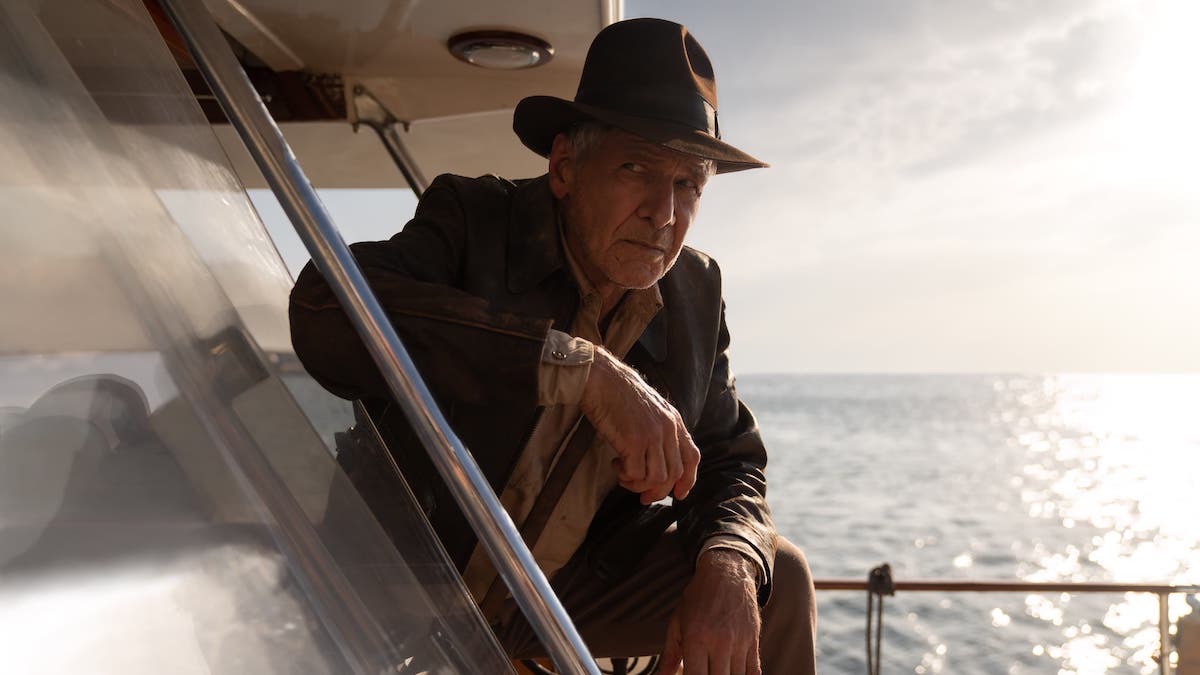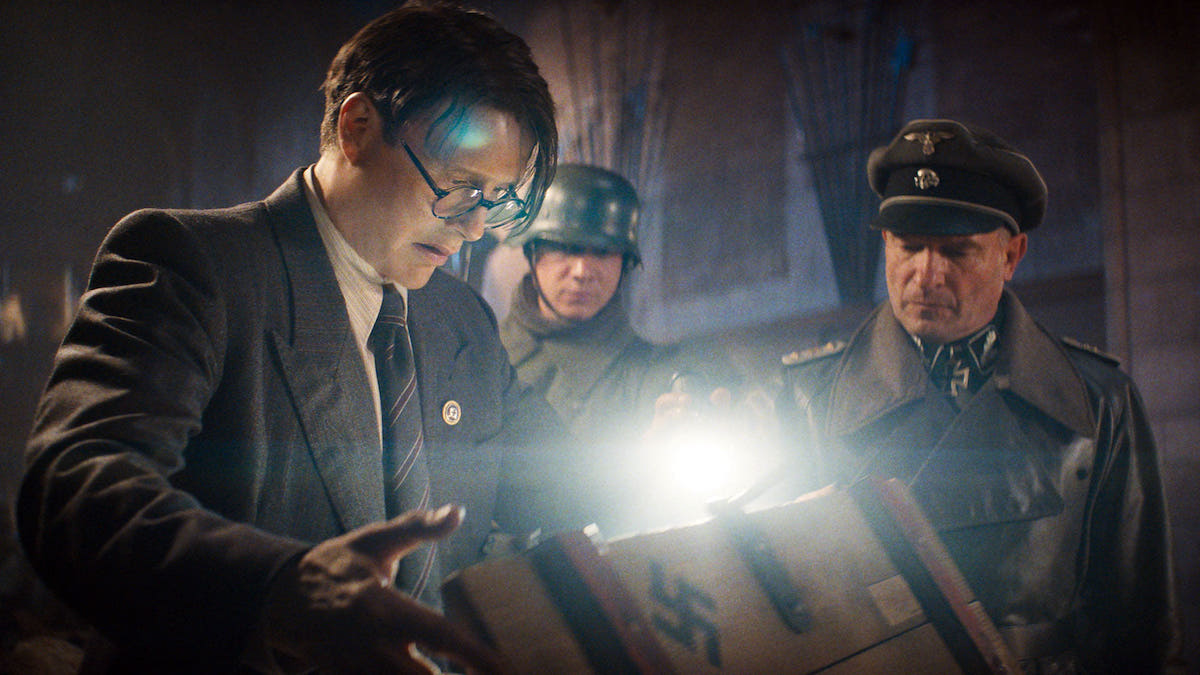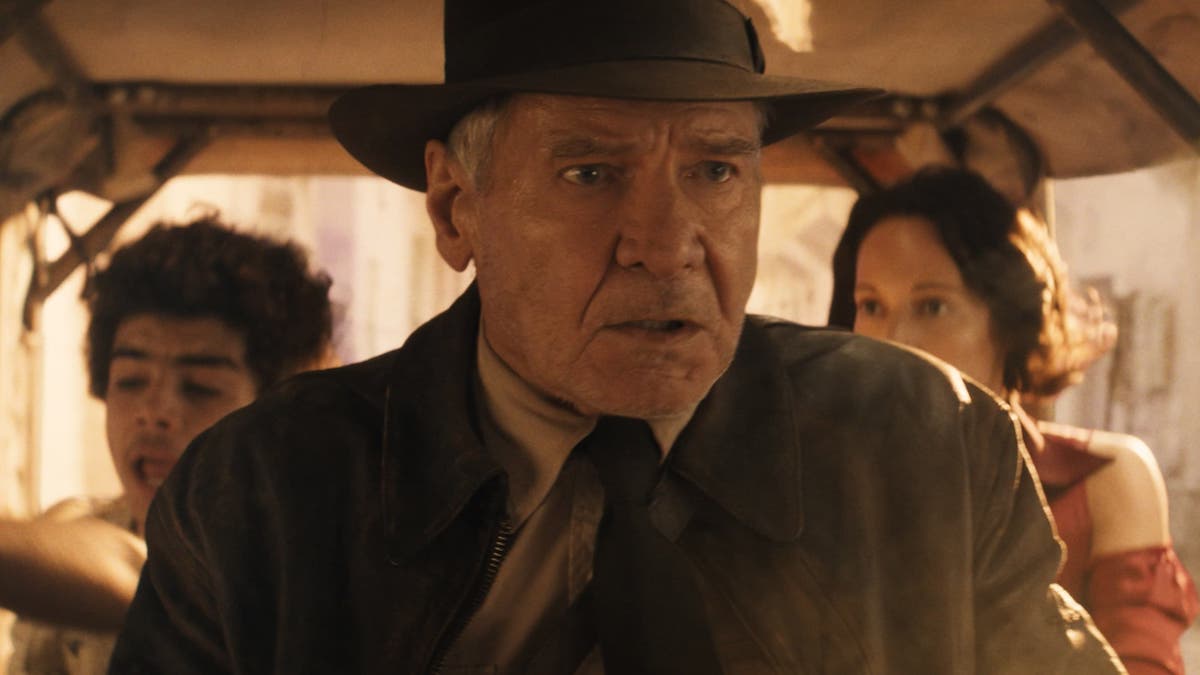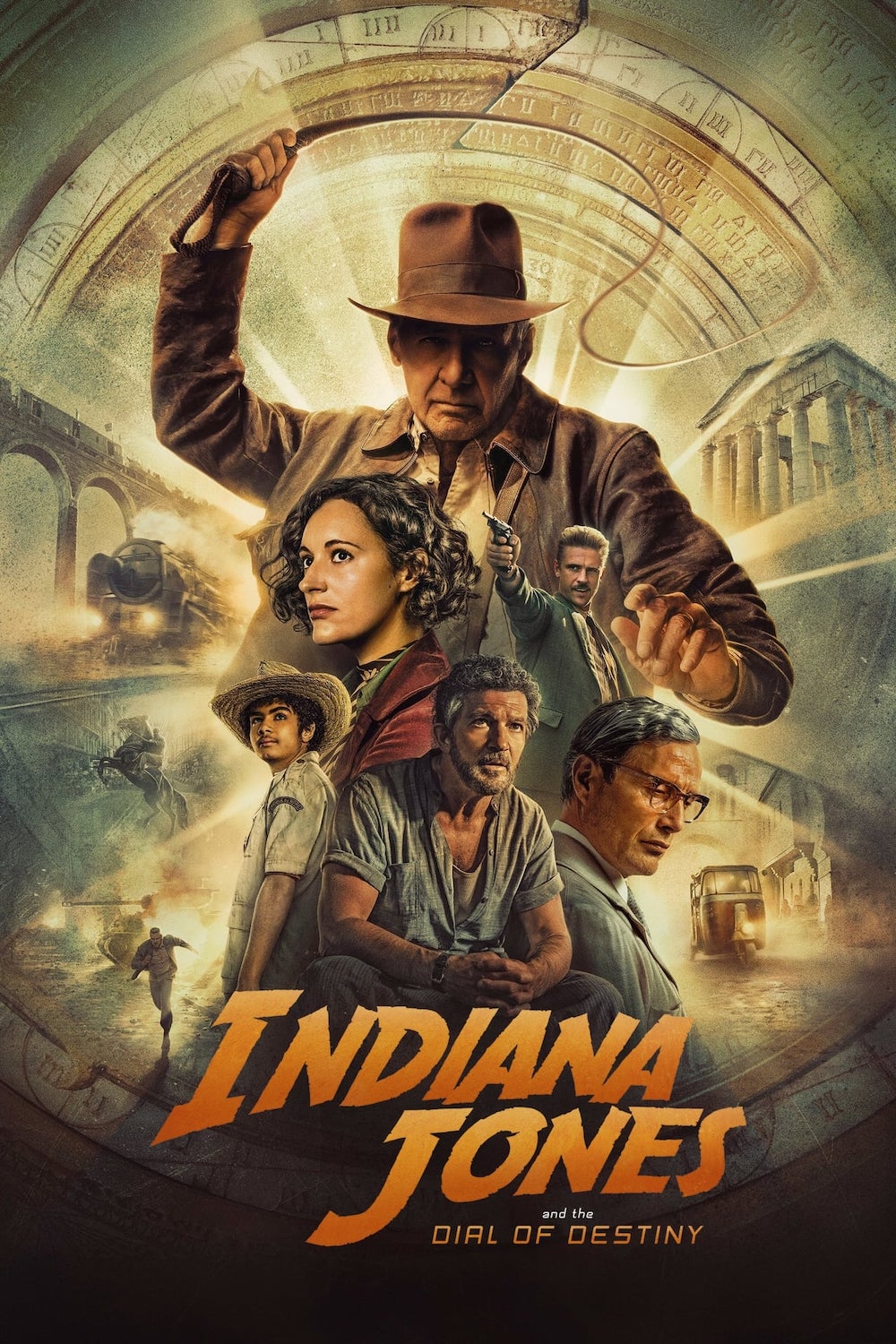INDIANA JONES AND THE DIAL OF DESTINY (2023)
Indiana Jones races against time to retrieve a legendary artifact that can change the course of history.

Indiana Jones races against time to retrieve a legendary artifact that can change the course of history.


“It’s not the years, honey. It’s the mileage.” It’s hard to believe Indiana Jones (Harrison Ford) once made that remark in Raiders of the Lost Ark (1981), 42 years ago, when he was only 39. Audiences would gladly turn back the clock to the days when everyone was introduced to the globe-trotting archaeology professor and part-time tomb raider.
The Indiana Jones saga, especially the first three classic instalments, is an icon of the action-adventure genre — so much so that every modern equivalent (National Treasure, Tomb Raider, Uncharted) owes them a debt and can’t resist referencing them. The franchise was already a vehicle for nostalgia in the 1980s, as writer-producer George Lucas used them as a means to update his beloved 1930s serials, which even inspired the term “cliffhanger” because their all-American heroes would commonly end each instalment clinging precariously off a cliff-face. Now, the fifth and likely final instalment arrives with Harrison Ford an octogenarian… so it’s very much about the years.

The boomers of Indiana Jones and the Dial of Destiny don’t care about history, as they’re more excited by contemporary music, counter-culture, and the future promised by 1969’s Moon Landing. Indy’s archaeology classes aren’t attended by respectful students, some of whom have a crush on him, as he’s now just a grey-haired geezer mumbling about arcane events before going home to nap (alone, having separated from his wife Marion), only rousing to bang on the door of his teenage neighbours who are playing their music down.
We technically don’t get reacquainted with grouchy “Mr Jones”, on the day of his retirement, until after a 1944-set prologue where Indy’s mid-adventure with associate Basil Shaw (Toby Jones), trying to get their hands on Archimedes’s titular Dial from German astrophysicist Jürgen Voller (Mads Mikkelsen) aboard a Nazi plunder train. Opinion will vary on the quality of ILM’s de-ageing effects during this sequence, but it’s mostly a success and the shakier moments still equal a high-quality video game I can suspend my disbelief over.
Wisely, this extended opening takes place during the night, or in low-lit castle interiors, so I wasn’t taken out of the moment too much and enjoyed seeing Indy in his prime. The only real problem with it, which extends across much of the ensuing movie, is that producer Steven Spielberg isn’t in the director’s chair and has handed the reigns to James Mangold (Logan). And while I like Mangold as a filmmaker, anyone taking over a franchise covered in Spielberg’s fingerprints leaves them trying to match the quality of a true master. And while it’s occasionally a decent tribute act, there isn’t the same visual inventiveness and clarity to any of the action set-pieces, which even the much-maligned Kingdom of the Crystal Skull (2008) offered at times.

The Dial of Destiny also struggles with having a reason to exist, beyond an understandable desire to see the character go out on a higher note than Crystal Skull. That previous sequel had already poked fun at Indy’s advancing age, too, but managed to end things with him getting married to sweetheart Marion (Karen Allen), so returning to the well carries a risk. It’s hard to say if Dial is appreciably worse than Skull, as they’re both unnecessary sequels crippled by the weight of expectations fans have for the originals—which, even if you’re of the opinion Temple of Doom (1984) is terrible, you can’t deny even that film contained several iconic moments and memorable stunts. Dial focuses on the idea Indy’s become a relic with no purpose (less so now he’s retiring), which provides Ford with some of his best moments as the character contemplates his own mortality and reflects on the losses he’s suffered as the world changed around him. I wish it contained more of that heart.
The story truly begins once Indy is reacquainted with his estranged goddaughter Helena “Wombat” Shaw (Phoebe Waller-Bridge), a fellow archaeology nut who’s obsessed with her late father’s quest to find Archimedes’s fabled Dial (a.k.a the “Antikythera mechanism”). Helena’s written as both an ally and pseudo-rival; a forthright woman who was inspired more by Indy’s exploits than her own father’s stuffier approach to archaeology. It would make more sense if Helena was just Indy’s selfish daughter, really, and she’s only not because it wouldn’t make chronological sense. Indy had already gone on an adventure with his own offspring in Skull, too. Helena has Marion Ravenwood’s pluck and her own Short Round-style sidekick in a kid called Teddy (Ethann Isidore) she’s taken under her wing. The downside is that Waller-Bridge can be quite annoying because there’s a snootiness to her acting style, but the story understandably needed to have someone who could shoulder some physicality. Indy is given unforgivably few moments to even crack his signature whip!

Mads Mikkelsen playing a Nazi is both perfect because he slips into the role of Voller like a glove, but also disappointing because it’s almost too obvious and he’s portrayed this sort of character too often in Hollywood. It’s odd that Mikkelsen can play sympathetic men and heroes in his Danish films, but overseas he’s stuck playing Bond villains, cannibals, evil wizards, and Nazi scum. Nevertheless, Mikkelsen is more effective than Cate Blanchett’s antagonist in Skull, and there’s something irresistible about giving Indy opportunities to punch Nazis.
James Mangold bravely accepted the challenge of making Dial of Destiny and tweaks his approach from Spielberg’s without things going astray. I dearly missed the match cut from the Paramount Pictures logo that every other sequel has opened with, and there’s a moment when Indy catches a plane that unforgivably isn’t followed by a red line travelling over a map, but perhaps Mangold wanted to shake things up a little. That said, there are certain things one demands from an Indiana Jones movie, so it’s frustrating when classic elements don’t appear or happen too rarely. Even John Williams’s score didn’t get my blood pumping, as the incredible “Raiders March” only plays over a few shots and never elicits goosebumps. Maybe that’s partly the fault of Mangold’s direction and the screenplay (written by Jez Butterworth, John-Henry Butterworth, David Koepp, and Mangold himself), which don’t often pull together to deliver standout sequences. There’s a chase through the streets of Tangier involving a rickshaw, which sounds like a great opportunity for fun moments and thrilling stunts but feels undercooked in practice. It doesn’t help that the sequence reminded me of a similar one from The Adventures of Tintin (2011), only with a motorcycle and sidecar, co-directed by Spielberg with Peter Jackson, which is comparatively jaw-dropping.

There’s plenty that works about Dial of Destiny, however. Ford is committed to the material and, in the more reflective moments, his performance elicits a tear as you see Indy as someone who’s seen great wonders but also endured terrible losses over a lifetime that’s closer to its end. It won’t surprise anyone to know the MacGuffin of the Dial offers the chance to literally turn back the clock, and that plays well into the theme of an elderly adventurer coming to believe there’s nothing in the present left for him, and his passion has always been for the past. Whenever the film is tapping into some of those ideas, it’s at its best. I also enjoyed how bonkers the story becomes in the third act, which is the most overt the franchise has been with its fantastical elements. But you’ll either embrace the script’s big swing and its far-fetched moments, or pine for the days when Indy closed his eyes as the power of God melted Nazi’s faces off around him.
Overall, Indiana Jones and the Dial of Destiny isn’t a patch on the original trilogy (not that anyone expected it to be ), but it has its own mix of pros and cons you’ll have to weigh up yourself, much like Crystal Skull. It’s certainly not awful or utterly objectionable, but it’s fairly generic and mostly coasts on audience goodwill for this character and franchise. If you didn’t grow up bowing at the altar of the Indiana Jones trilogy as masterclasses for blockbuster filmmaking, perhaps you’ll see this movie as significantly worse than those over-35 who can channel childhood memories of watching Indy countless times on VHS. But I don’t begrudge Harrison Ford for using the last decade to do a victory lap with his best-known characters, in Star Wars: The Force Awakens (2015) and Blade Runner 2049 (2017), and it’s obvious from his portrayal here that Indiana Jones is closest to his heart. Dial of Destiny is at least a decent way to bury the past.
USA | 2023 | 154 MINUTES | 2.39:1 | COLOUR | ENGLISH • GERMAN • ANCIENT GREEK


director: James Mangold.
writers: Jez Butterworth, John-Henry Butterworth, David Koepp & James Mangold (based on characters created by George Lucas & Philip Kaufman).
starring: Harrison Ford, Phoebe Waller-Bridge, Antonio Banderas, John Rhys-Davies, Toby Jones, Boyd Holbrook, Ethann Isidore & Mads Mikkelsen.
